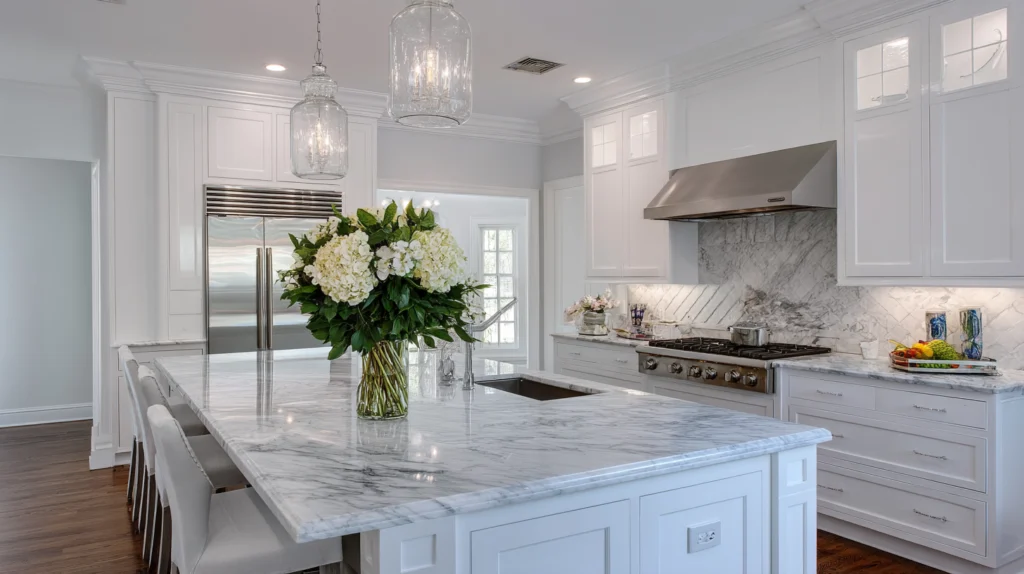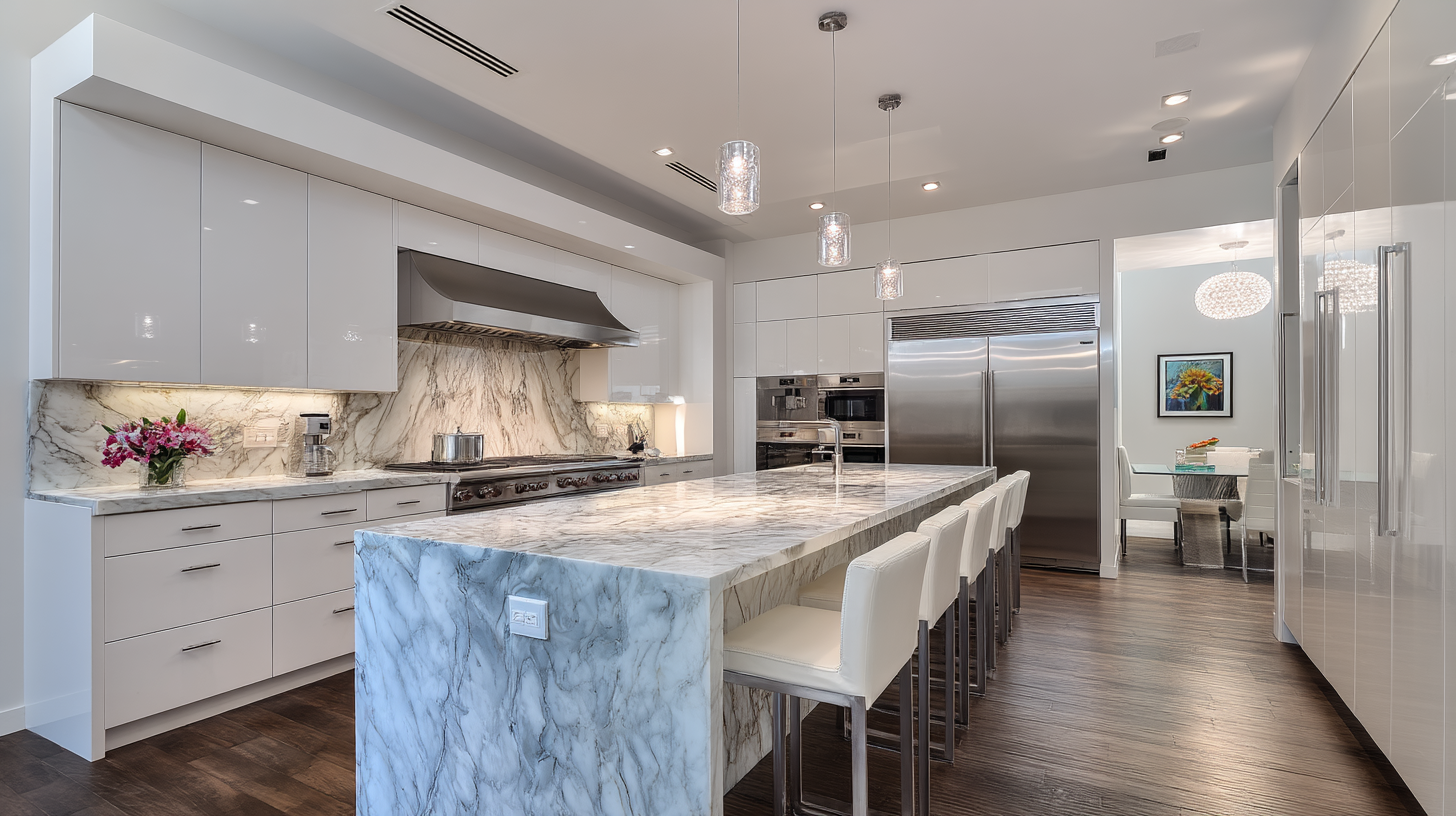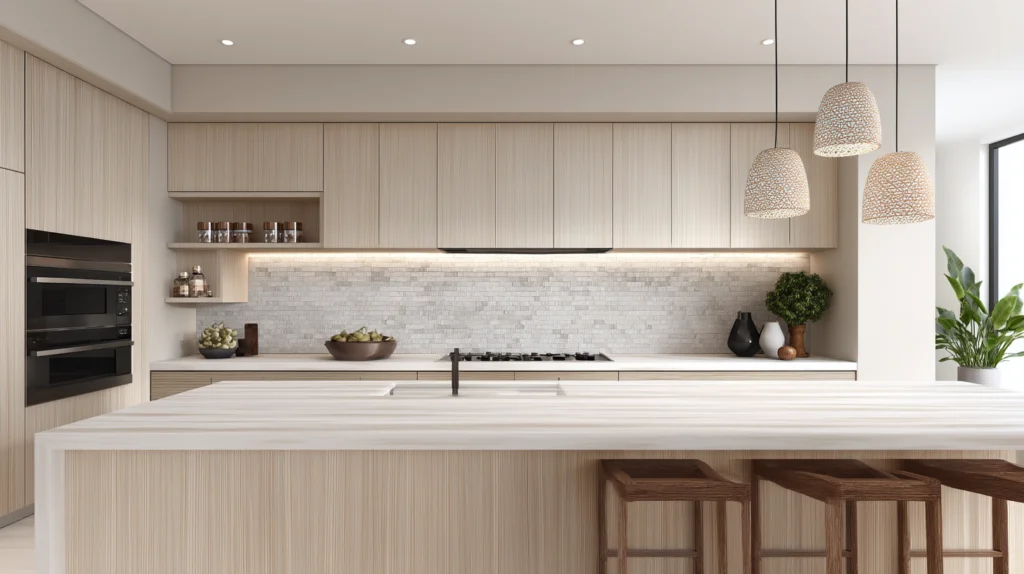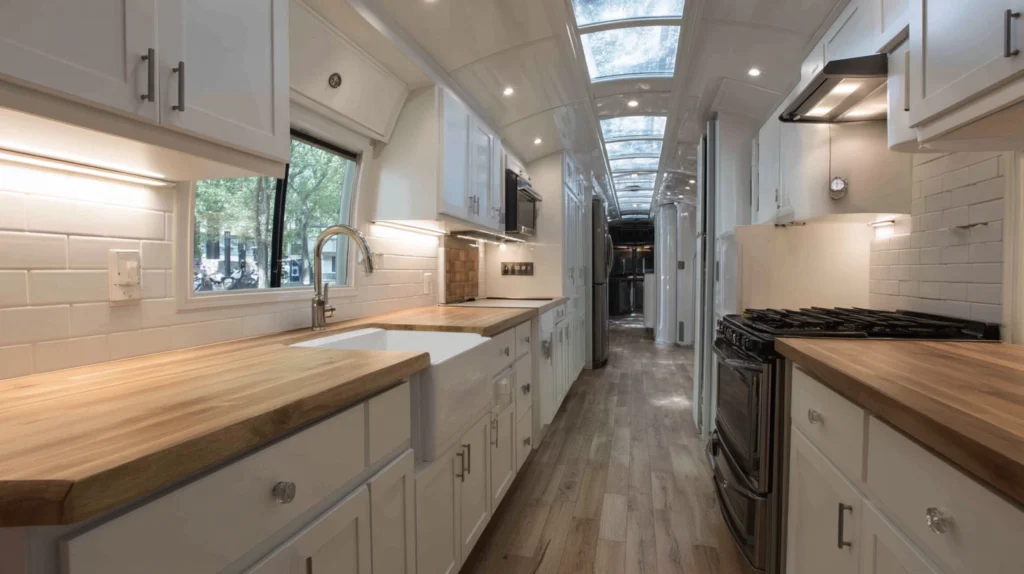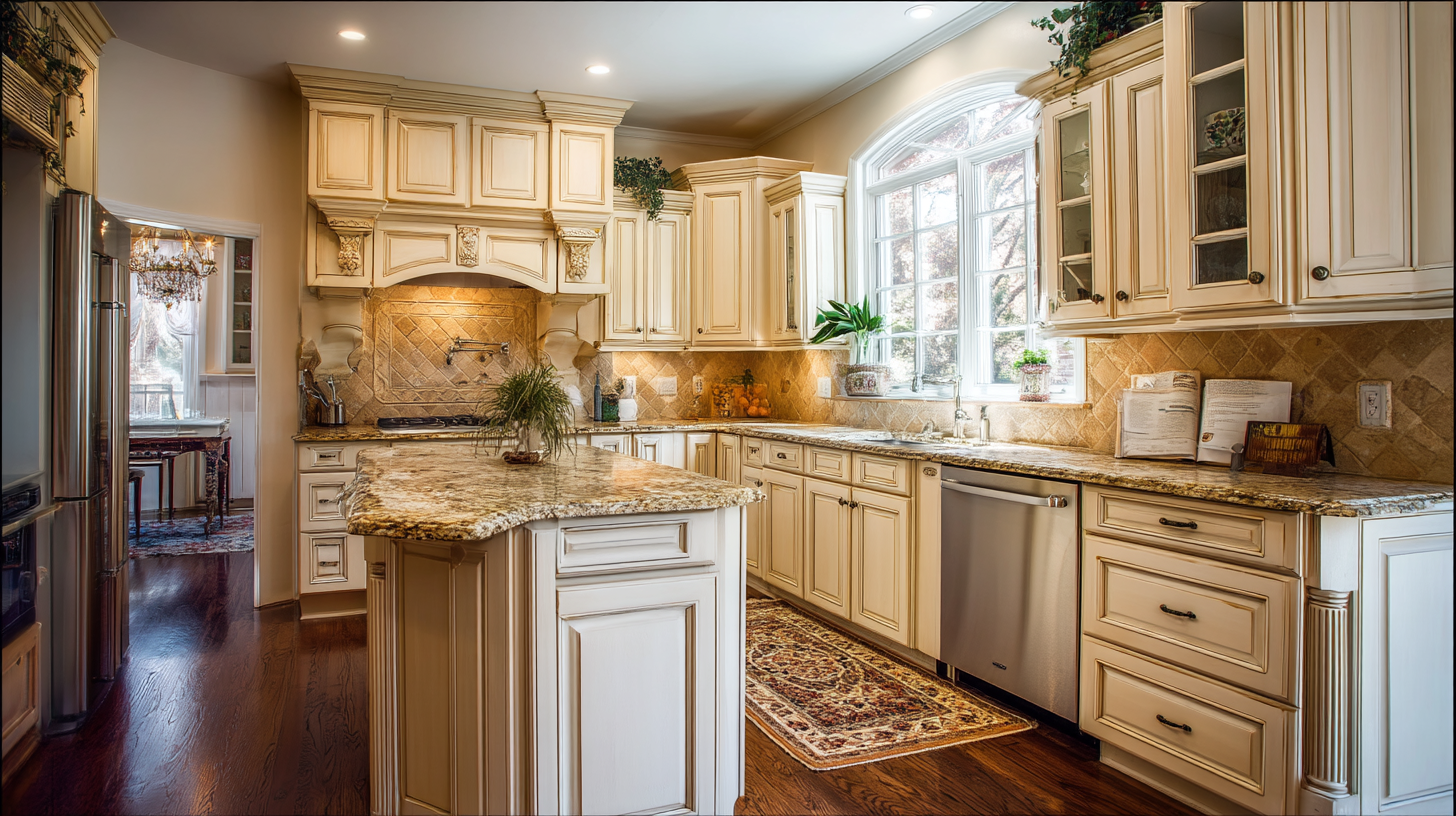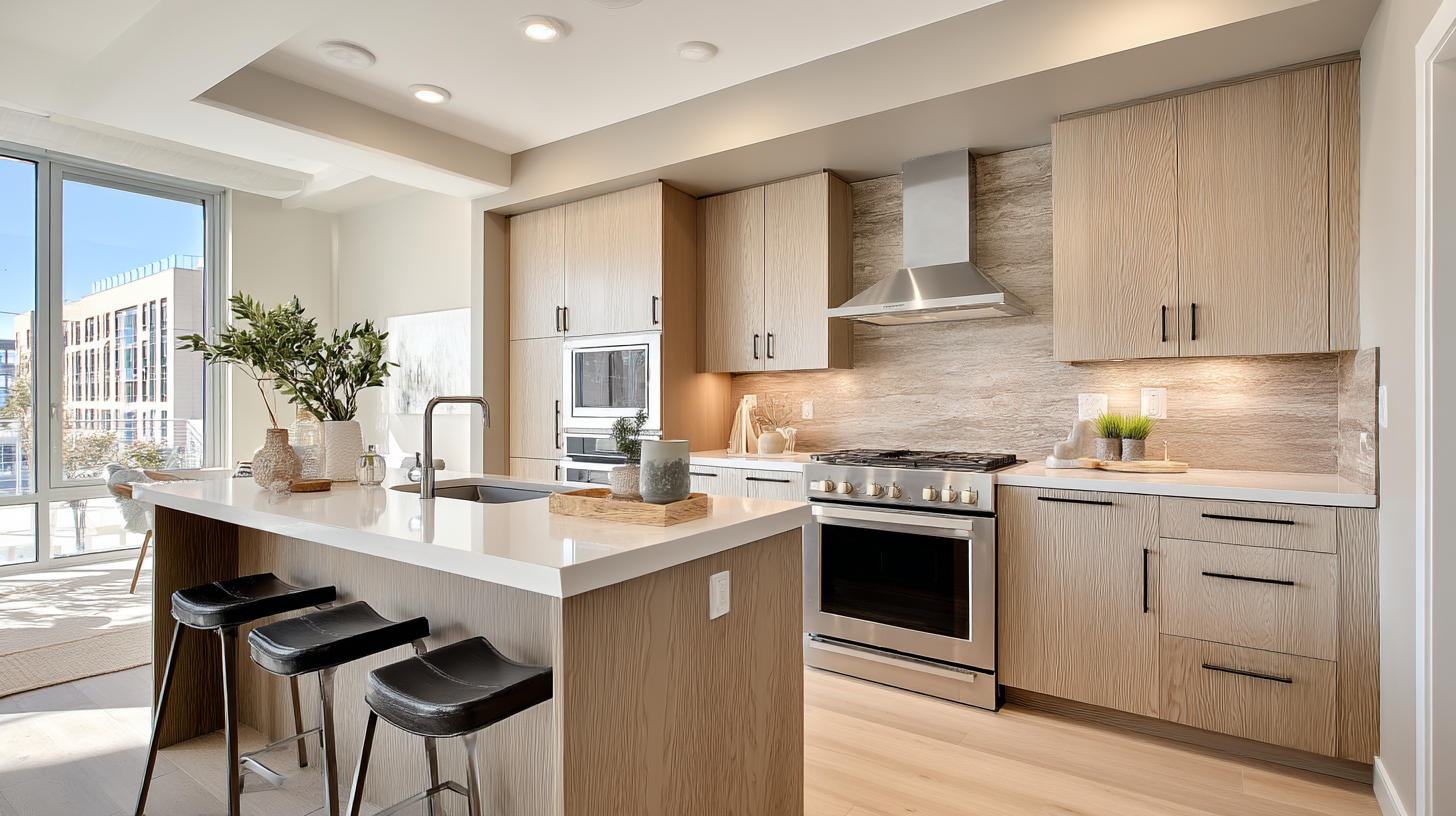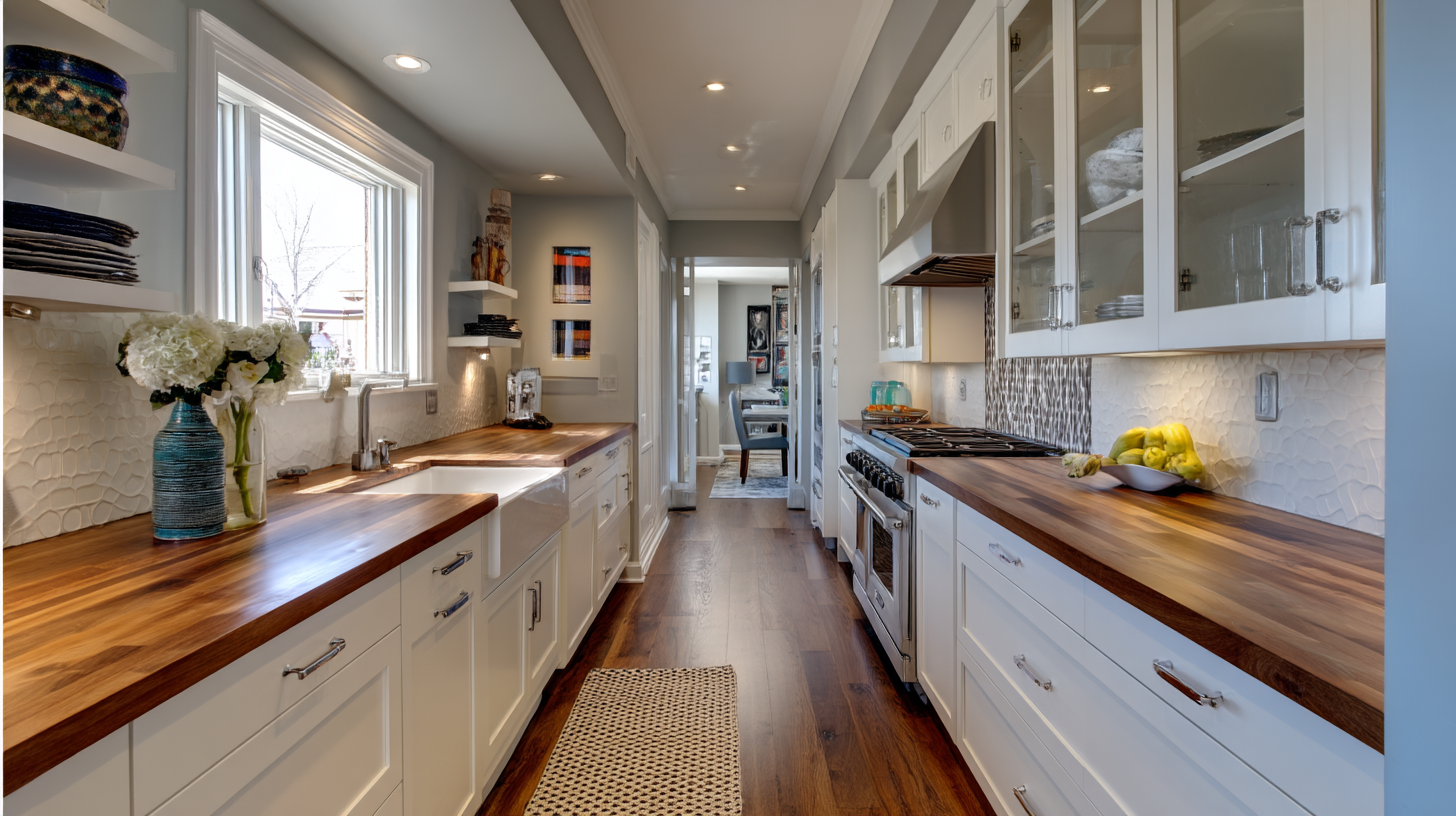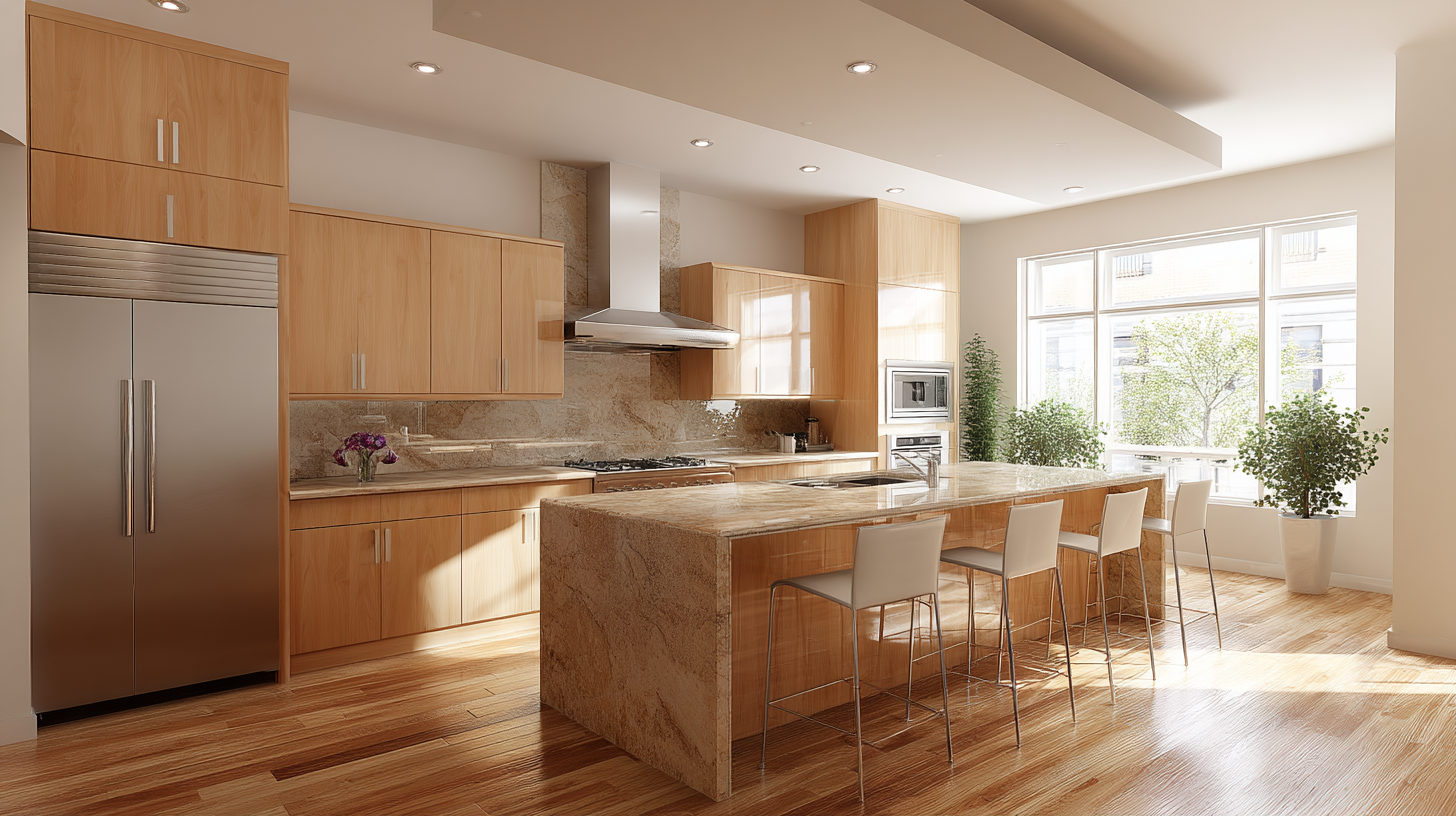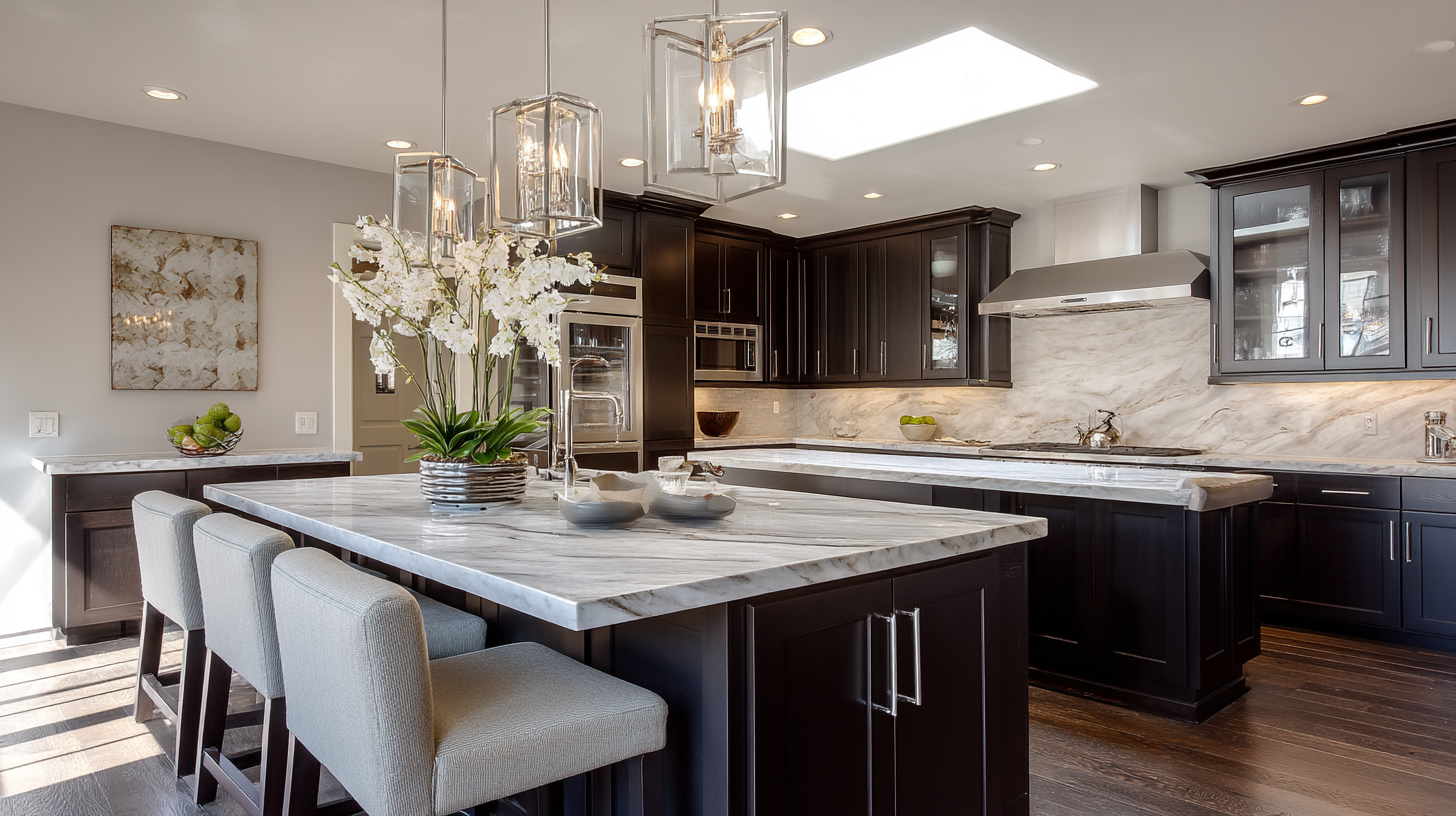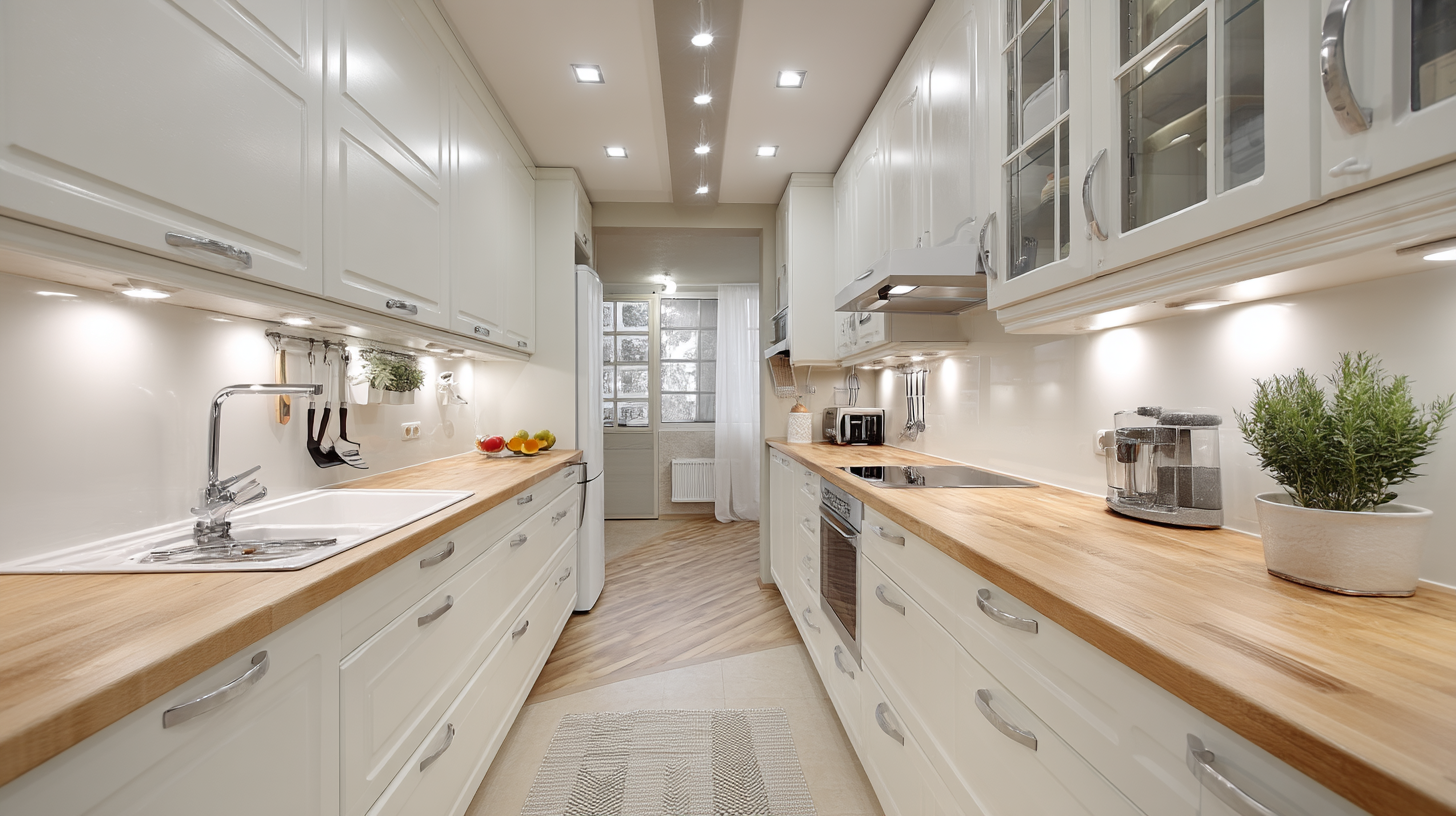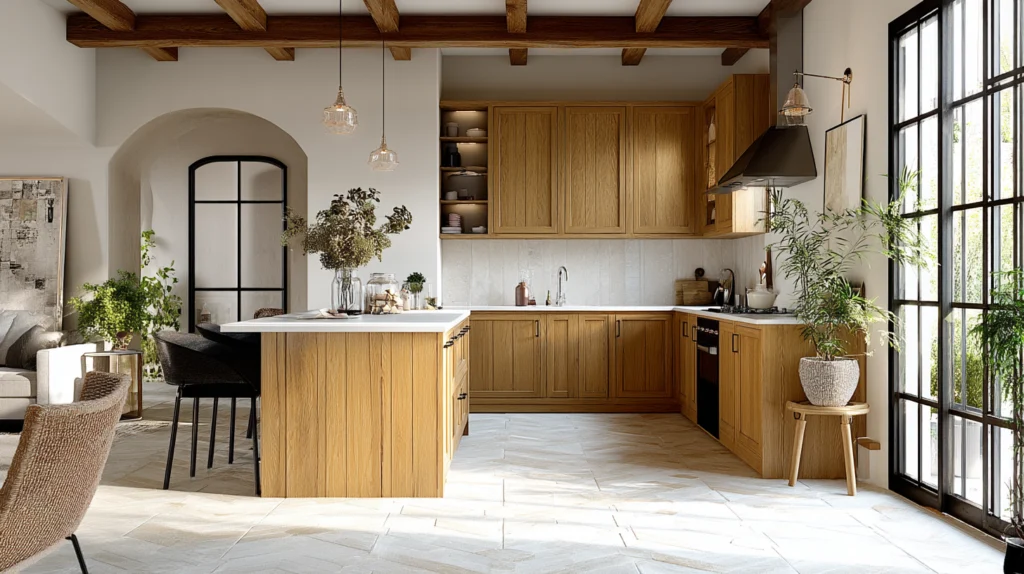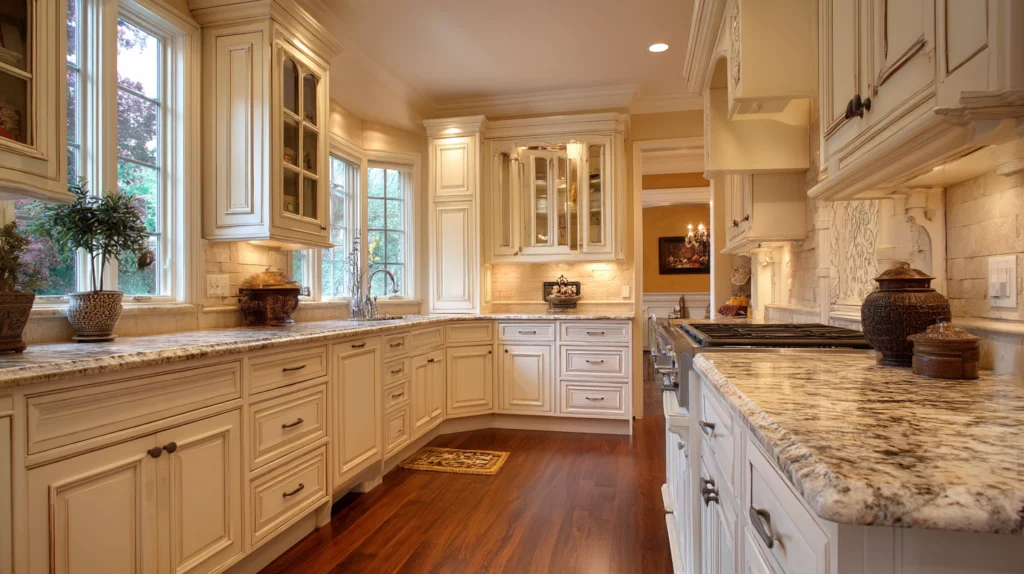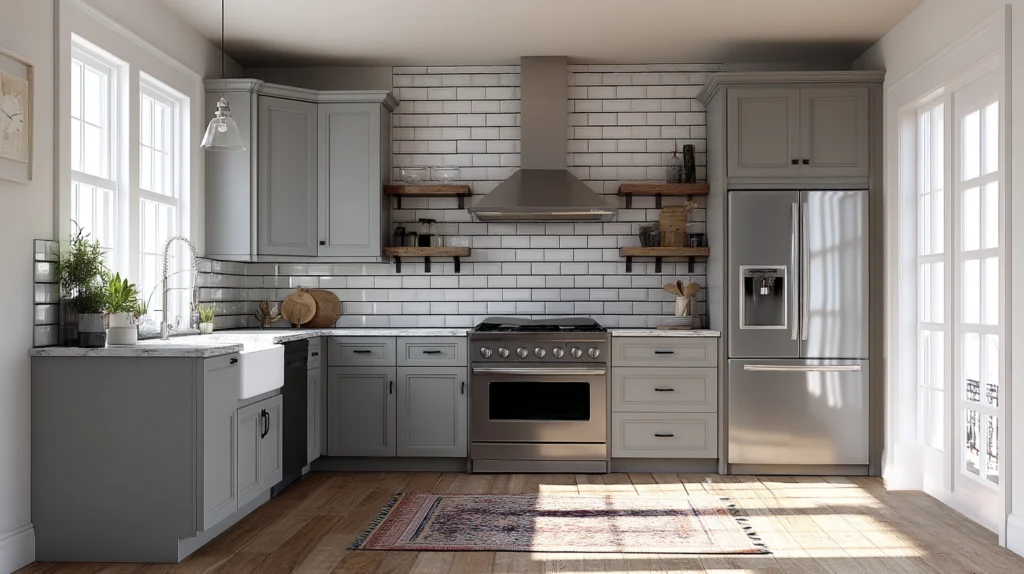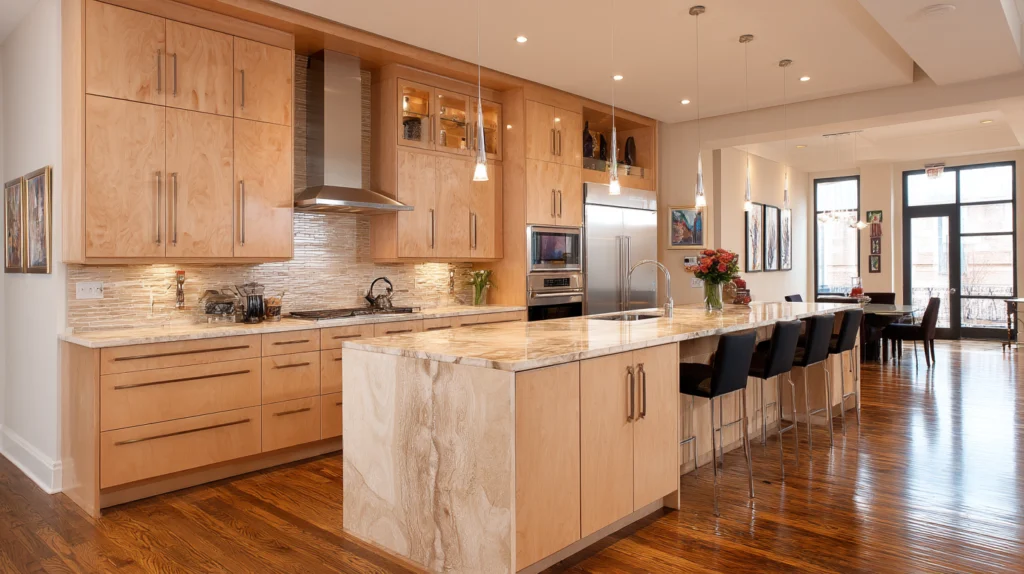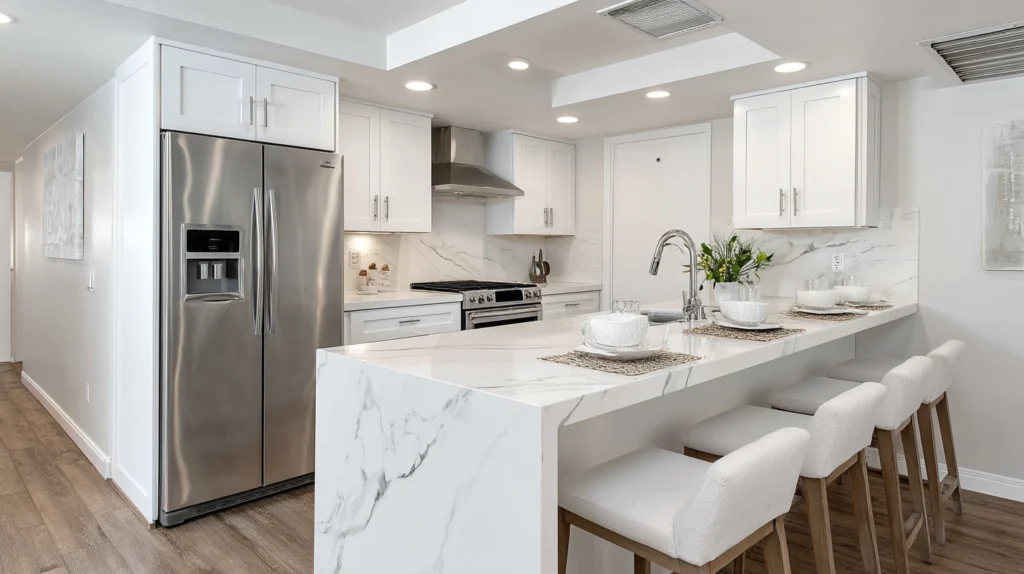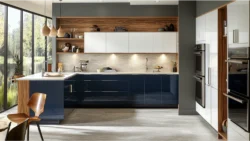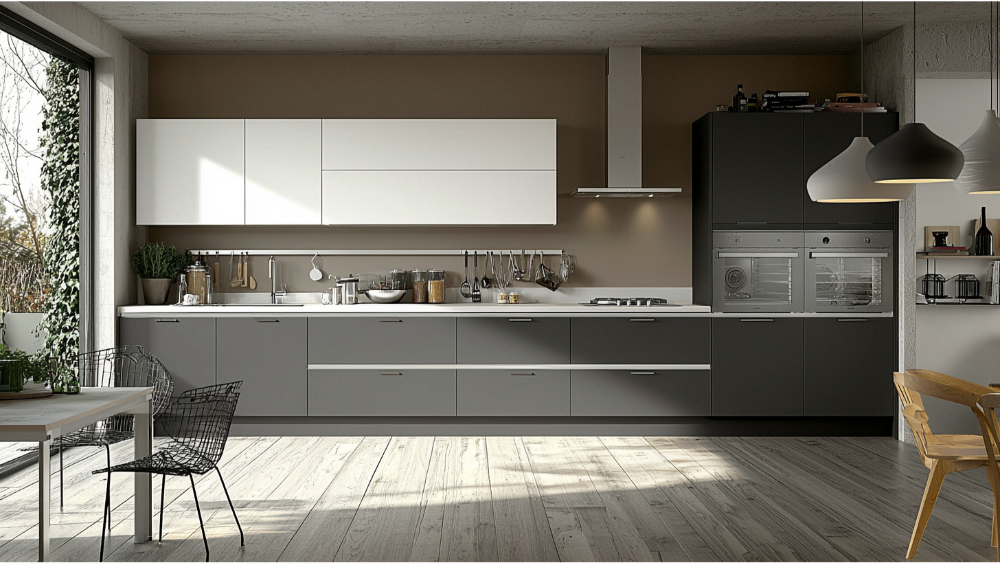Dark Blue Kitchen Cabinets: Why This Bold Trend Is the New Classic for Modern Kitchens
Dark blue kitchen cabinets have taken center stage in 2025’s top design trends, and for good reason. Homeowners are moving away from all‑white kitchens and embracing color that feels timeless, elegant, and deeply personal. If you’ve been searching for a way to make your kitchen stand out while still staying rooted in classic design, dark blue kitchen cabinets may be the perfect fit for your home in Roseville or Sacramento.
In this in‑depth guide, we’ll show you what makes this color trend so popular, how to design with it, and how to ensure your kitchen looks amazing now and for years to come. Whether you’re remodeling your forever home or getting ready to sell, America’s Advantage Remodeling is here to bring your vision to life.
Why Homeowners Are Falling in Love with Dark Blue Kitchen Cabinets
The National Kitchen & Bath Association recently revealed that blue cabinets are dominating the 2025 kitchen landscape. Designers and homeowners alike are moving toward color palettes that offer personality and sophistication, and dark blue sits right at the center of that movement.
Dark blue kitchen cabinets bring balance, they’re bold without being overpowering, dramatic but still grounded. They work seamlessly in modern, transitional, and even traditional homes. Think of blue as the denim of kitchen design, versatile, stylish, and always in season.
Beyond aesthetics, blue also creates a calming and grounded atmosphere. In a space as high‑functioning as the kitchen, that sense of serenity matters. With blue cabinets in your layout, you’re making a statement and bringing design depth in one step.
Shades of Style: Choosing the Right Blue for Your Cabinets

Navy, Indigo, and Midnight — What’s the Difference?
Not all blues are created equal. Some lean cooler, others warmer; some are deep and moody, others vibrant and crisp. Navy blue offers a more traditional, stately appearance – perfect for timeless kitchens. Indigo brings modern edge. Midnight blue, with its near‑black depth, is bold and rich – ideal for high‑contrast designs.
The key is to select a shade that works with your kitchen’s space, natural light, and overall style.
Matte vs Gloss: How Finish Impacts the Look
Finish matters as much as color. A matte finish offers a more subtle, modern feel, and tends to hide fingerprints and smudges better – ideal for busy households. A gloss finish bounces light and makes a bold visual statement but may require more maintenance.
We guide our clients through finish options to strike the right balance between performance and style.
Coordinating with Your Kitchen’s Natural Light
Lighting plays a huge role in how dark blue kitchen cabinets look. In well‑lit kitchens, darker shades create beautiful contrast and depth. In smaller or naturally dim kitchens, it’s best to balance dark cabinets with light countertops, backsplashes, and open shelving so the space doesn’t feel heavy or cramped. This approach keeps the kitchen feeling airy and open, inviting natural light to reach every corner.
In your home in Roseville or Sacramento, we’ll walk you through how the space feels in the afternoon, how the windows play in with the cabinets, and how we position your layout to maximize the feel of openness and light.
What to Pair with Dark Blue Kitchen Cabinets

Countertops that Complement
Pairing your dark blue kitchen cabinets with the right countertop is key to a cohesive design. White quartz or marble offers a striking contrast and keeps the space feeling bright and clean. Light wood countertops add warmth and work well in transitional or farmhouse styles. For a more contemporary feel, consider subtle gray veining or light concrete‑inspired finishes.
This layering of materials with cabinetry creates a design that feels rich and intentional.
Best Backsplash Options
Backsplashes give you a chance to enhance or soften the drama of dark blue kitchen cabinets. White subway tile is a timeless option that never competes with navy cabinets. For a bit of edge, go with textured or geometric tile in a neutral tone. Warm metallic accents such as brass inlay or fixtures can elevate the entire space.
Choosing the right backsplash around blue cabinets is one of the easiest ways to bring cohesion and style.
Hardware & Fixtures that Work Best
Brass, matte black, and brushed nickel are standout choices when paired with dark blue kitchen cabinets. These finishes pop against the deep color and help define the kitchen’s overall tone. Go for sleek, modern handles if you want a contemporary look, or choose vintage‑inspired pulls for a more classic aesthetic. Don’t forget how pendant lights and lighting above the kitchen island influence the overall feel.
Pendant lights not only add charm but also highlight the beauty of your cabinetry and countertops, creating a sophisticated ambiance.
Flooring Options for a Balanced Look
To avoid overpowering the room, flooring should either contrast or neutralize. Light oak, maple, or neutral‑toned tile helps ground the design without making the space too dark. If you already have darker flooring, using lighter elements above, like white countertops or open shelving, can create visual balance.
In our Roseville and Sacramento projects we often recommend flooring that opens up the kitchen while letting blue cabinetry be the star.
Toe Kick and Cabinet Details
Don’t overlook the importance of a well-designed toe kick. This small but essential feature covers the gap between the floor and base cabinets, giving the kitchen a polished, seamless look. Selecting toe kicks that match your dark blue cabinets can enhance the overall cohesiveness of your kitchen design.
When (and When Not) to Choose Dark Blue Cabinets

Dark blue kitchen cabinets make a bold statement, but they’re not a one‑size‑fits‑all solution. They work best in kitchens with:
- Plenty of natural or artificial lighting
- Open or semi‑open floor plans
- High ceilings or spacious layouts
In smaller kitchens or enclosed galley spaces, you’ll want to be strategic. Consider using blue cabinets only on the lower base cabinets or just on a statement island. For resale‑conscious homeowners, it’s important to recognize that while navy cabinets are trending now, they may not appeal to every buyer. However, when paired correctly, navy cabinets can look timeless and high‑end, boosting appeal and value.
When in doubt, we can help you visualize different options using samples, digital renderings, and layout previews during your design consultation.
Built to Last: What to Know About Cabinet Materials and Construction
Solid Wood, Plywood, or MDF – What’s Best for Dark Paint Colors?
Cabinet construction plays a big role in how well dark finishes hold up. Solid wood offers excellent durability but may be prone to expansion and contraction. High‑quality plywood offers strong performance and stability. MDF, when properly sealed and painted, creates a smooth surface perfect for bold colors like navy or indigo.
At America’s Advantage Remodeling we only recommend materials that meet high standards for longevity, finish quality, and performance.
Factory Finish vs On‑Site Paint
Pre‑finished cabinets offer a flawless, durable finish, often applied in controlled environments. On‑site painting provides flexibility and customization but can be affected by conditions in your home. For kitchen cabinetry in a deep shade like navy or indigo, a high‑quality factory finish often results in a cleaner, longer‑lasting look, especially because dark colors show imperfections more easily.
We walk each homeowner through the pros and cons of each method based on their project needs and budget.
Real‑Life Inspiration: Dark Blue Kitchen Cabinet Ideas for Your Home

One of our recent kitchen remodeling projects in the Sacramento area showcased the full power of navy cabinetry. The homeowner wanted a clean but unique design. We installed deep navy blue kitchen cabinets on the perimeter, paired with crisp white quartz countertops, warm wood island panels and brushed nickel hardware. The result was a kitchen that feels fresh, timeless and intentionally designed.
The kitchen also featured stainless steel appliances that complemented the rich dark blue paint on the cabinetry, adding a sleek, modern touch. The stove and range were perfectly integrated into the design, making cooking a pleasure in this charming and sophisticated space.
Here are more combinations to inspire your own remodel:
- Two‑tone cabinetry: white uppers, navy lowers for balance and contrast
- Statement island: use dark blue kitchen cabinets on your island only for a pop of color
- Flat‑front modern navy blue kitchen cabinets: pair with matte black hardware for a sleek urban feel
- Rustic navy kitchen cabinets: add butcher block counters and matte black hardware for a modern farmhouse feel
No matter your style, we’ll help you choose the right combination of materials, finishes, and layout to bring your kitchen to life.
Common Questions About Dark Blue Kitchen Cabinets (FAQ)
Do dark blue cabinets make a kitchen look smaller?
Not necessarily. When paired with the right lighting and complementary colors, dark blue kitchen cabinets can add depth and character without closing in the space. Strategic use of windows, walls, lighting and layout make all the difference.
Are dark blue kitchen cabinets hard to keep clean?
Dark shades tend to show dust and fingerprints more easily. Choosing a matte finish and high‑quality materials helps reduce maintenance and keeps your cabinets looking great longer.
What color walls go best with navy cabinets?
Neutral tones work best, think soft whites, warm grays, or even light beige. This keeps the focus on the cabinetry while maintaining harmony in the space.
Can I repaint my existing cabinets dark blue?
Yes, if the cabinets are in good condition and properly prepped. Our refinishing service can help you achieve a flawless navy blue look that appears custom‑built and cohesive.
Will this trend still be in style 5‑10 years from now?
Absolutely. While colors shift over time, navy and deep blue shades are considered modern classics. With the right design and materials, dark blue kitchen cabinets will remain stylish and timeless.
Still have questions? Give our design team a call, we’re happy to walk you through your options and help you access the best experience in the Sacramento and Roseville kitchen remodeling market.
How America’s Advantage Remodeling Can Bring Your Vision to Life
At America’s Advantage Remodeling we believe great design is personal, and it starts with understanding your lifestyle, your taste, and your home. Whether you’re ready to go all‑in on bold navy kitchen cabinets or exploring ideas, we’re here to help you every step of the way.
From cabinet construction to layout flow, lighting plans to hardware choices, our team brings years of experience and craftsmanship to every kitchen remodel. We proudly serve Roseville, Sacramento, and surrounding communities with integrity, quality, and attention to detail.
Ready to create a kitchen that’s bold, beautiful, and built to last? Let’s talk.
Bring Sophistication and Style to Your Kitchen with Dark Blue Cabinets
Dark blue kitchen cabinets are more than a passing trend, they’re a powerful way to infuse style, depth, and modern sophistication into your home. Whether you’re designing a brand‑new kitchen or updating your current one, navy blue kitchen cabinets make a confident, timeless statement.
With the right combination of blue paint, quality doors, and thoughtful layout, your kitchen can reach new heights of beauty and charm. Imagine a space where the blue of the cabinets meets the sky through your windows, bathed in natural light, perfect for cooking and entertaining.
Looking for guidance? Our experienced team at America’s Advantage Remodeling is ready to help. Call us today or schedule your free design consultation. Ask about our promotion and bring the best experience to your kitchen project.












